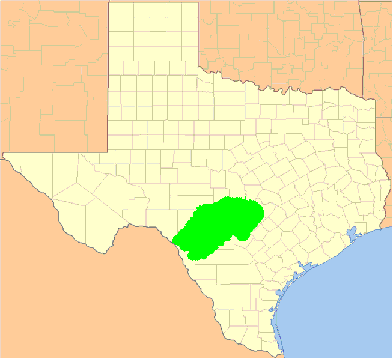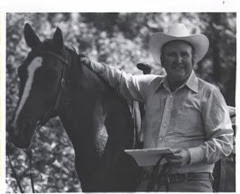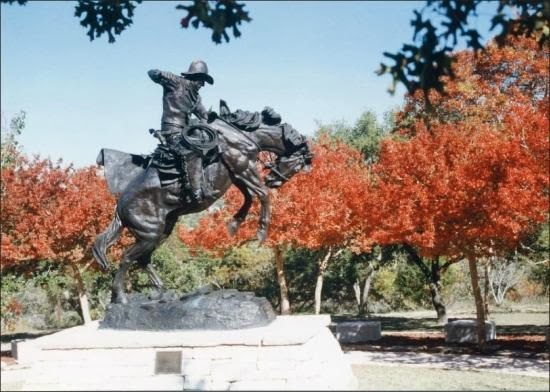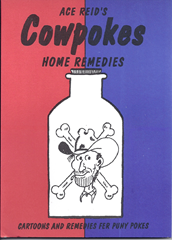Are you bustling around preparing for Thanksgiving? For my family, this weekend launches the holidays as well as reminds us of all we have for which we’re thankful. But let me tell you about the first Thanksgiving. No, not the Pilgrims, but the first my husband and I celebrated as a couple.
Monday, November 25, 2013
THANKSGIVING SOUTHERN CORNBREAD DRESSING RECIPE
Are you bustling around preparing for Thanksgiving? For my family, this weekend launches the holidays as well as reminds us of all we have for which we’re thankful. But let me tell you about the first Thanksgiving. No, not the Pilgrims, but the first my husband and I celebrated as a couple.
Thursday, November 21, 2013
A Right Jolly Old Elf
 |
| Santa Claus by Thomas Nast, 1963 |
Twas the night before Christmas, when all through the house
Not a creature was stirring, not even a mouse.
The stockings were hung by the chimney with care,
In hopes that St Nicholas soon would be there.
Though he called him St Nicholas, Clement C. Moore's most famous and beloved poem essentially invented the modern Santa Claus in 1823. The legend of a saint became the myth of a "jolly old elf" who drove a sleigh pulled by flying reindeer and could magically pop up and down family chimneys whether they were in a tenement in New York or a little house on the prairie.
What Moore described in words, illustrator and political cartoonist Thomas Nast manifested in pen and ink for Harper's Weekly in 1863.
 |
| Visiting the Camp by Thomas Nast, 1863 |
It makes sense that Lincoln would go to Nast for an illustration of Santa Claus visiting the Union soldiers - a clever piece of Yankee propaganda.
Nast continued to refine his vision of Santa Claus over the years. By 1881, he had image that would be as easily recognized by children today as those who saw his art when it was first published.
 |
| Santa Claus by Thomas Nast, 1881 |
He was dressed all in fur, from his head to his foot,
And his clothes were all tarnished with ashes and soot.
A bundle of Toys he had flung on his back,
And he looked like a peddler, just opening his pack.
His eyes-how they twinkled! his dimples how merry!
His cheeks were like roses, his nose like a cherry!
His droll little mouth was drawn up like a bow,
And the beard of his chin was as white as the snow.
Other artists, particularly Norman Rockwell and Haddon Sundblom, would refine Santa's image, but Clement C. Moore and Thomas Nast defined it.
Wednesday, November 20, 2013
Stagecoach Travel in Texas-- Only The Hardy need Apply
 In the mid-1800s, people needed determination and patience to travel from one side of Texas to the other. Early in the Civil War, the government banished the Butterfield Overland route that had been an established route from St. Louis, Missouri to San Francisco through the southern states. Subsequent to the war, shorter routes were established between population centers. Stagecoaches ran on a weekly or bi-weekly schedule. A trip from St Louis to San Francisco involved about 25 days of travel. The coaches were drawn by six horses and stops were made every 12 miles for fresh teams. Depending on the terrain, coaches covered between 5 and 12 miles per day—running day and night. Passengers were grateful to get hot coffee, biscuits and jerky at these stops; on rare occasions, hot meals were available.
In the mid-1800s, people needed determination and patience to travel from one side of Texas to the other. Early in the Civil War, the government banished the Butterfield Overland route that had been an established route from St. Louis, Missouri to San Francisco through the southern states. Subsequent to the war, shorter routes were established between population centers. Stagecoaches ran on a weekly or bi-weekly schedule. A trip from St Louis to San Francisco involved about 25 days of travel. The coaches were drawn by six horses and stops were made every 12 miles for fresh teams. Depending on the terrain, coaches covered between 5 and 12 miles per day—running day and night. Passengers were grateful to get hot coffee, biscuits and jerky at these stops; on rare occasions, hot meals were available.Once Jessamay got inside the stagecoach, she would have had her choice of window or middle position (approximately 15” in width) on either a forward or backward-facing bench seat. She would not have wanted to be the last to board because that would leave her on the middle bench with no backrest. As she set out on her journey, she could read the rules about men forgoing swearing and smoking in a lady’s presence, but tobacco chewing was allowed, as long as the chewer spat downwind. I would hope so. Or if the person (presumed to be a male) couldn’t refrain from drinking alcohol, then he must pass the bottle around. Yum. Snoring loudly or using another passenger’s shoulder as a pillow was frowned upon. Improper advances toward a woman could get the male kicked off the stagecoach in the middle of nowhere. Forbidden topics of conversation were stagecoach robberies and Indian uprisings. Sounds like a smart rule. Passengers were encouraged not to jump from the stage in case of runaway horses so as not to be left victim to the weather, hostile Indians or hungry coyotes. Ouch.
Monday, November 18, 2013
Christmas Reads
| www.laurirobinson.blogspot.com |
Saturday, November 16, 2013
Charlene Raddon's Celebration - Release and Cover Reveal
Friday, November 15, 2013
The Shotgun Messenger
 |
| Wells, Fargo strongbox |
Monday, November 11, 2013
Texas Hill Country & Ace Reid, Cowboy Cartoonist
Recently Hubby and I visited friends in Kerrville, in the heart of the famed Texas Hill Country, a twenty-five county area of central and south Texas.
Texas Hill Country; Wikipedia Commons
This is a land of rugged hills topped by mountain cedar and green valleys (when not in a drought condition.) The Hill Country includes Enchanted Rock, the second largest granite dome in the U.S., and extends into San Antonio’s northern suburbs and the west side of Austin.
Hill Country, Bandera County; Wikipedia Commons
Enchanted Rock; pink granite, 1825 ft. above sea level; Wikipedia Commons
Kerrville, a city of over 22,000, is named after Major James Kerr, a veteran of the Texas War for Independence from Mexico in 1836. Kerr was a friend of early settler Joshua Brown, who set up a shingle-making camp in the area in the 1850s. Kerr County was formed in 1856. That same year, Brown donated the town site from his extensive acreage along the Guadalupe River, which runs through Kerrville.
Kerrville around 1900; Wikipedia Commons
Kerrville was also the longtime home of cowboy humorist Ace Reid (1925 – 1991), creator of the cartoon Cowpokes which, at one time, ran in over 400 weekly newspapers. He produced many popular cartoon books and calendars during his lifetime.
Reid was raised in Electra, Texas, near the state’s northern border, where he lived the life of a cowboy. He served in World War II as a machinist’s mate in the U.S. Navy in the Pacific. During his time at sea, he drew a cartoon called "The Sorry Salt" for his ship's newspaper. After the War, "The Sorry Salt" became "Jake," his main character in Cowpokes.
On September 11, 1949, Ace married Madge Parmley, daughter of the doctor in Electra, his home town. The couple moved to Kerrville in 1952. Ace’s first cartoon appeared in West Texas Livestock Weekly that same year. Two years later, their son and only child, Stan, was born.
Ace Reid achieved fame with his earthy characters, who spoke the language of farmers and ranchers, chronicling their trials and tribulations with honesty and humor. He died on November 10, 1991. His widow, Madge, still lives in Kerrville and has kept Cowpokes going ever since Ace's death.
The Museum of Western Art
While in Kerrville, we visited the Museum of Western Art, a beautiful showplace filled with paintings, prints and sculpture produced by western artists. In October, when we were there, the museum featured a large display of Ace Reid’s work. Fantastic!
Thanks to our friends, who are closely acquainted with Madge Reid, we were honored to meet her. I purchased three of her husband’s books and, with Madge’s kind permission, I’m posting one recipe from Cowpokes Cookbook and Cartoons. http://www.amazon.com/Ace-Reids-Cowpokes-Cookbook-Cartoons/dp/B001UQY2AC
And one remedy from Cowpokes Home Remedies. http://www.amazon.com/Ace-Reids-Cowpokes-Home-Remedies/dp/B001KAILUK
From Cowpokes Cookbook and Cartoons:
“When the ‘southerners’ came West they found the Mexicans had their own version of ‘Cornbread’ and the ‘hands’ on the frontier ranches such as those around Albany, Texas liked it too.”
1 1/2 cups yellow corn meal 1 cup chopped onion
3 tsp. baking powder 1 cup or 8 1/2 oz. can cream style corn
1/2 tsp. salt 5 or 6 jalapenos -- cut up
(Little sugar if you are for it. I don't.) 1 package commercial sour cream
1 cup grated yellow cheese
Mix all dry ingredients; then others. Beat well. Bake well. Bake in greased pan at 400 degrees 15 to 25 minutes, or until it cracks a little on top. [Pan size not specified]
From Cowpokes Home Remedies: WARNING: I DO NOT recommend you try this!
SOAR THROAT, CHILDREN
“When me and mama moved from up on the divide to Luckenbach on Grape Creek it seemed as the kids all the time had sore throats, weakly eyes and snotty noses. And they would cry.
The local remedy for the sore throat was to collect wild chili-p-teens and grind them plum up fine with powdered prickly ash leaves. We’d stick a straw or turkey quill in that mess and blow it down their sore throats. And they would cry.
They wouldn’t have the same kind of sore throat anymore.
We only did this to the younguns because the biguns learned to fight us.
Learnin’ is growin’ up and, then, to home remedies, kids grew up mity fast in Luckenbach.”
---Hondo Crouch
Ha! I’d fight this remedy too, wouldn’t you? Now, are you in the mood for a sweet, short Christmas romance? How about a scrumptious cookie recipe? Come take a taste of:
Christmas Cookies for Tristan http://www.amazon.com/Christmas-Cookies-Tristan-Lyn-Horner-ebook/dp/B00GHP4PXU
Happy Turkey Day and Joyous Noel!
Friday, November 8, 2013
Three New Stories from Jacquie Rogers #Christmas #western #romance @JacquieRogers
Christmas spirit, anyone?
Wolf Creek, Book 9:
A Wolf Creek Christmas
 The other authors in A Wolf Creek Christmas are Pulitzer Prize nominee Jory Sherman, Spur winner Meg Mims, Jerry Guin, Peacemaker and Spur winner Troy D. Smith, and James J. Griffin. Here’s my story:
The other authors in A Wolf Creek Christmas are Pulitzer Prize nominee Jory Sherman, Spur winner Meg Mims, Jerry Guin, Peacemaker and Spur winner Troy D. Smith, and James J. Griffin. Here’s my story: ’Twas the Fight Before Christmas
by Jacquie Rogers
Amazon and soon at other online stores and in print.
Wishing for a Cowboy
 The other story is in the Prairie Rose Publications anthology, Wishing For a Cowboy, and these stories are western historical romances—eight of them. The other authors are Phyliss Miranda, Cheryl Pierson, Sarah J. McNeal, Kathleen Rice Adams, Tracy Garrett, Tanya Hanson, and Livia J. Washburn.
The other story is in the Prairie Rose Publications anthology, Wishing For a Cowboy, and these stories are western historical romances—eight of them. The other authors are Phyliss Miranda, Cheryl Pierson, Sarah J. McNeal, Kathleen Rice Adams, Tracy Garrett, Tanya Hanson, and Livia J. Washburn.A Gift for Rhoda
by Jacquie Rogers
A mail-order bride disaster!
Amazon | Smashwords | Print
Sleight of hand? or
Sleight of Heart
A Straight-Laced Spinster
A Gambler With Magic Hands
Available on Amazon (and other stores soon!)








.jpg)















